Latin name: Howea
Category: evergreen trees
Birthplace: Lord Howe Island in Australia
Hovea - the elegant princess of the plant world
Howea (Howea) - known for a small genus, consisting of only two varieties of evergreen, bushy, hardy palm trees, decorating the Arecaceae family with their presence.
The native land of this unique palm is considered to be the small island of Lord Howe, which washes the amazing Tasman Sea with its waves. Only five hundred kilometers separate the east coast of the Australian mainland and this island. This is the only tiny place in the world - the coastal areas of the island, on which the wild-growing palm tree of howea is located.
Lord Howe Island became the prototype for the scientific name of the howei palm. And her name is kentia, which is also closely related to the area of \u200b\u200bher natural deployment. Kentia is the capital of the island, which has such a unique palm tree on its territory.
With the appearance in Europe, the howea palm is grateful to the outstanding traveler explorer James Cook, who, on one of the expeditions in the Pacific Ocean, discovered an unusual palm tree. In the second half of the nineteenth century, this unique culture began to lead among representatives of a variety of palms.
European nobles did not deny themselves the pleasure of contemplating in their living rooms, salons, ballrooms this miracle of nature, which was exported from a distant island in the form of young specimens. After all, until one thousand nine hundred and seventy, botanists had not yet been able to grow a young palm tree from seeds.
An interesting and great work was carried out by the native inhabitant of Lord Howe Island, who was able to artificially germinate the seeds. The problem was solved. Currently cultivated howea is found all over the world and has become a popular valuable shade-loving houseplant.
In areas where hot tropical and subtropical climatic conditions prevail, gardens and home gardens adorn beauty with graceful forms. She will wonderfully decorate group compositions with her presence, in which there is a place for such houseplants similar to palm trees as livistona, hamedorea, washingtonia. It will look charming next to cercis, exochord and other evergreen trees. At home, the shade-loving indoor plant Howea palm looks charming on the balcony, on the loggias, in the decor of office premises, in the lobbies of various enterprises, shopping centers, conference rooms next to plants such as dracaena, yucca, ficus.
Wild hovei are evergreen slow-growing plants reaching fifteen meters in height. This unique, attractive palm tree has a thin, upright, smooth trunk with light brown furrowed bark. On it from below and to the top are fibrous leaf scars-rings. At the top in a spiral flaunts a large number of slightly bent down, dark green, pinnate, hard, leathery leaves. The leaf plates are formed by long, lanceolate-linear segments, their edges are solid, and the tips are sharp. The outer side of the leaf is a uniform dark green color, and the back side is a greenish-emerald hue with small dark dots. Leaves are held by meter petioles.
A flowering palm acquires small, spherical, unisexual flowers, which are collected in long, axillary, paniculate inflorescences. The color of the male flowers is cream, and the female flowers are white. After flowering, the palm pleases the eye with small fruits in the form of egg-shaped, green or red berries. Howea palm has a powerful superficial root system, which has plump lateral roots.
In room conditions, the howea palm claims to be spacious, because its dimensions can reach two meters in height, and it does not indulge in flowering indoors. And if the home territory does not allow you to keep a large palm tree, you can buy a charming hamedorea. After all, howea and hamedorea have minor differences.
Unlike its high relative, hamedorea is limited to a meter tall and flaunts with soft leaves. Even a young hamedorea pleases others with its flowering. Hovea in the interior flaunts not only for its decorative qualities, but also for its useful properties, being a natural filter, for its ability to clean the airspace around it, destroying various harmful chemical compounds.
Houseplants that take part in cleaning the airspace are azalea, chlorophytum, scindapsus, philodendron.
Tobacco smoke is very harmful to howea.
The palm tree does not have toxic substances, it is an absolutely safe indoor plant and can perfectly bring exotic nature into the interior of any children's institution, office space, store.
Popular beliefs did not leave aside this beautiful palm tree. She has a strong positive energy. It instills in a person good-heartedness, optimism, cheerfulness, cheers up, helps to get rid of depressive states, office workers become more hardworking. Unreasonable sadness, despondency pass without a trace in communication with the Hovea.
Hovea species
Howea Belmoreana
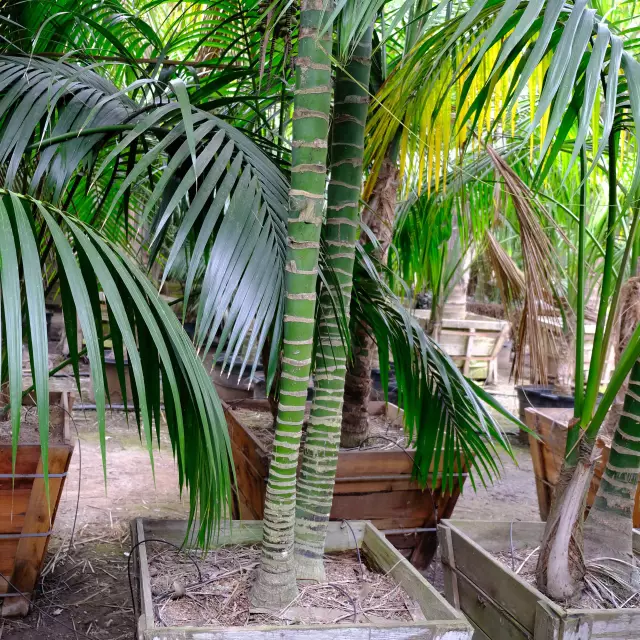 This variety is represented by a slender palm tree, reaching ten meters in natural conditions. The lower part of the trunk has a slight thickening. Short petioles up to forty centimeters long hold curved pinnate, not at all solid dark green leaves, reaching a length of more than two meters. And they are formed by small and narrow leaves. How fast does howea grow? This palm is growing very slowly. But if she creates conditions close to natural, then you can get a tree up to three meters high.
This variety is represented by a slender palm tree, reaching ten meters in natural conditions. The lower part of the trunk has a slight thickening. Short petioles up to forty centimeters long hold curved pinnate, not at all solid dark green leaves, reaching a length of more than two meters. And they are formed by small and narrow leaves. How fast does howea grow? This palm is growing very slowly. But if she creates conditions close to natural, then you can get a tree up to three meters high.
Howea Forsteriana
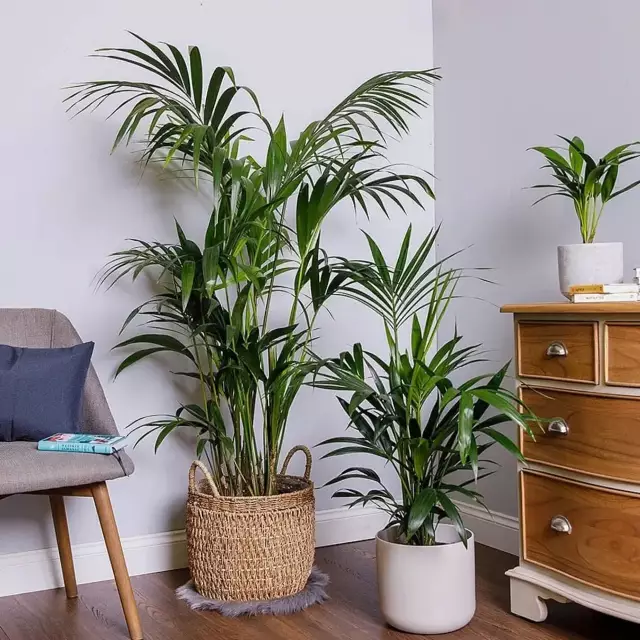 Some call this cold hardy variety Forsteriana. She slightly outstrips her relative Belmora in growth and reaches a height of fifteen meters. The base of the straight trunk is not thickened. It attracts attention with long, up to two and a half meters, pinnate, slightly curving, dark green leaves, located on one and a half meter petioles.
Some call this cold hardy variety Forsteriana. She slightly outstrips her relative Belmora in growth and reaches a height of fifteen meters. The base of the straight trunk is not thickened. It attracts attention with long, up to two and a half meters, pinnate, slightly curving, dark green leaves, located on one and a half meter petioles.
Hovea Forster will be pleasant even in cool living conditions with temperatures up to 10 ° C. Feels great in greenhouses, which she decorates with her flowering and the appearance of fruits. Prefers spacious premises, such territories are offices, shopping and business centers.
Howea care at home
The home palm is a hardy, original, very exotic plant, and at the same time, exceptionally hardy, able to adapt and adapt in adverse conditions. With these moments, the hovea has earned love, and an irrefutable desire to have this beauty in the house. To get a chic palm tree, let's take a closer look at the rules for caring for a tropical beauty.
Choice of location and temperature
Home kentias are flowers that love the shade, so they will feel great in any area. The southeast and southwest direction of the windows, near which the palm tree will be located, is optimal for the plant. It must be provided with bright diffused light, and in winter the daylight hours must be extended by artificial lighting.
The bright scorching rays of the sun must be shaded.
To get a lush uniform crown, the plant is periodically deployed relative to the light source.
The most favorable temperature indicators for an unpretentious room palm tree are 17-24 ° C. The winter run-up ranges from 16°С to 18°С, the summer limit is 24°С. A slight drop in temperature will not affect the palm, the main thing is to prevent sudden changes. Hovea will be happy to spend the summer off-season on the balcony or in the front garden.
Protect howei from drafts.
Humidity and watering
Humidity should not be below fifty percent. In the spring and summer, howea likes daily spraying, and is also not against sanitizing. In these procedures it is desirable to use distilled water. Remove dust and dirt from the leaves preferably with wet wipes.
Regular airing is very useful for indoor palm trees.
Summer watering with warm water should be plentiful with an interval of three or four days. Winter procedure is performed once every two weeks. The main indicator of the frequency of watering will be the condition of the soil mixture in the pot. It should be slightly dry. Useful for watering rain or snow water.
Stagnation of water in the stand is not allowed. This will affect the condition of the foliage.
Soil and its top dressing
Ready-made soil mix for palm trees can be purchased at a flower shop. Inpidually, well-drained, permeable soil can be prepared from the following ingredients: soddy soil, wet peat or leaf humus, coarse sand or perlite. (2:2:1) Charcoal can be added.
In the warm off-season, a growing unpretentious indoor palm tree needs to be fed. Fertilizers that are intended for palm crops or other deciduous-decorative indoor plants are used once every fourteen days. Spraying with liquid fertilizers that have an admixture of potassium and magnesium will be useful for howea.
Hovea transplant
An annual spring transplant of a young palm tree will benefit. In a flowerpot, slightly larger than the previous one, we transplant by transshipment. We transplant older specimens as they grow older once every two or three years. After all, transplantation is not a very pleasant procedure for an unpretentious deciduous indoor plant, howea. Frequent transplantation for adult kentia is not recommended. A five-year interval would be an appropriate period for replanting an adult palm tree. You can limit yourself to the annual replacement of the topsoil.
The transplanted palm should remain at the previous depth level.
It is advisable to choose flowerpots for planting howea with a heavy bottom, for the stability of the planted plant.
A good drainage layer of broken brick or expanded clay is required.
Howea palm breeding
Many amateur flower growers are interested in an important question when growing their pet: how does howea reproduce? A young, unpretentious indoor palm tree can be obtained by sowing seeds or piding a bush.
The seed method of reproduction is a more laborious and lengthy process. Fresh seeds soaked for about twelve hours are sown in a peat-perlite mixture. Greenhouse conditions are created with daily five-minute ventilation by applying bottom heating at a temperature of 22-27°C. The appearance of the first slow-growing sprouts can occur after twelve months.
When transplanting, it is very easy to pide the bush and transplant into a separate flowerpot. Greenhouse conditions will help the young plant to quickly get stronger and grow the necessary root system for the qualitative growth of the palm tree.
Pests and diseases
In case of oversight and violation of growing conditions on an unpretentious room palm tree, you can see mealybugs, spider mites, scale insects, thrips. If the attack of uninvited guests is not very intense, you can fight them with a soap solution. In a more serious attack, you should seek help from insecticides.
Difficult Growing Moments
- The ends of the leaf plates turned brown - the air in the room is too dry.
- Hovea grows slowly or completely stopped growing in the spring, the leaves acquire a light green hue - the palm tree needs to be urgently transplanted or fed with nitrogenous fertilizers.
- The lower leaves turned yellow, and the tips turned brown - the palm tree is watered irregularly.
- The leaf plates in the summer period were covered with yellow or brown spots, became slightly curly - the lighting is too bright.
Howea palm, this beautiful unpretentious flower for the lazy, will perfectly complement any interior and will decorate your home for a long time for many years. When following the strict rules of growing with love and attention, you will get a wonderful lush, luxurious tree with laconic lines that will delight the eyes of all loved ones.
Indoor plants in alphabetical order can be viewed on the site and admire their beauty and originality. To do this, you need to open the catalog of indoor plants from a to z.




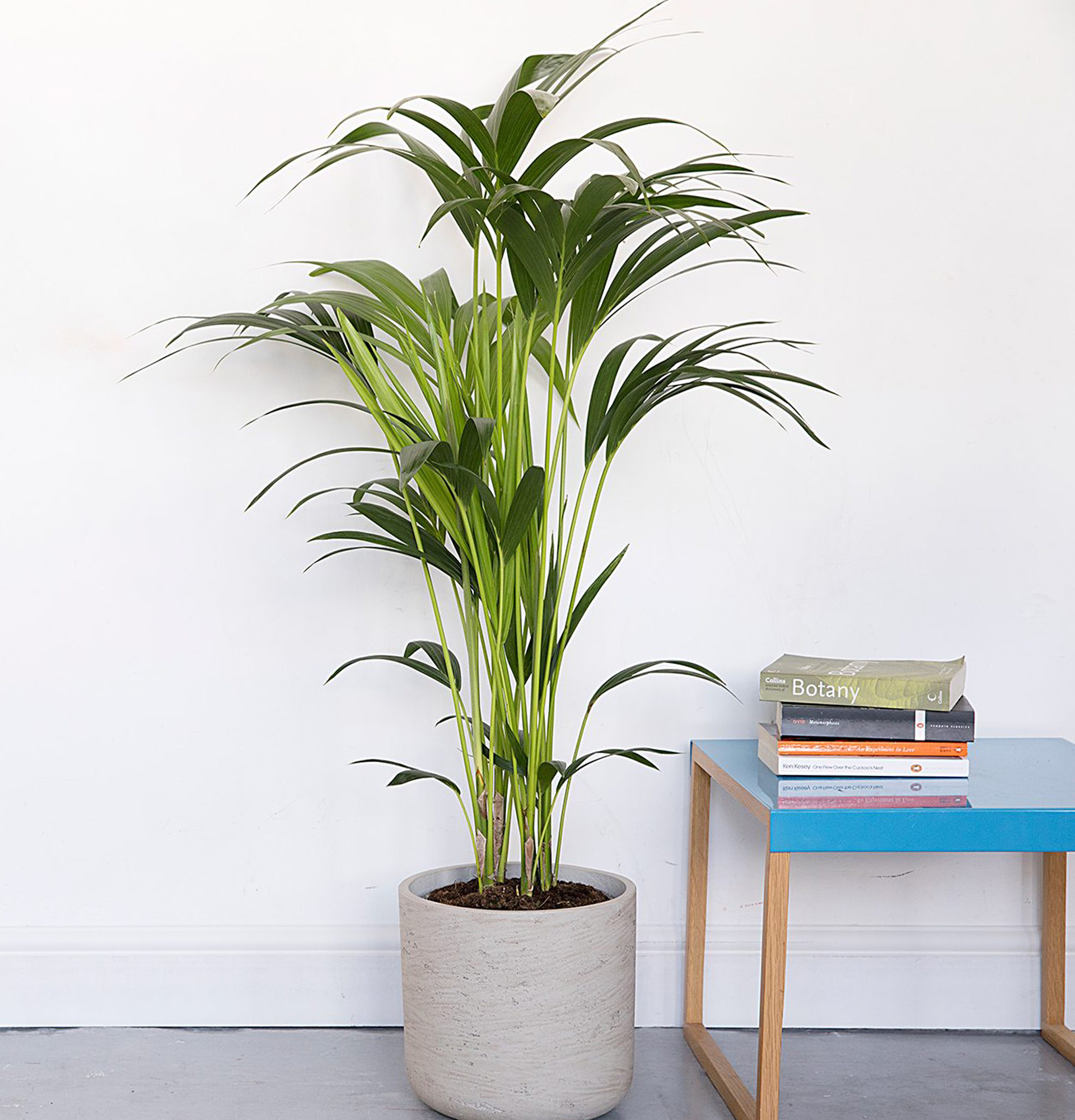










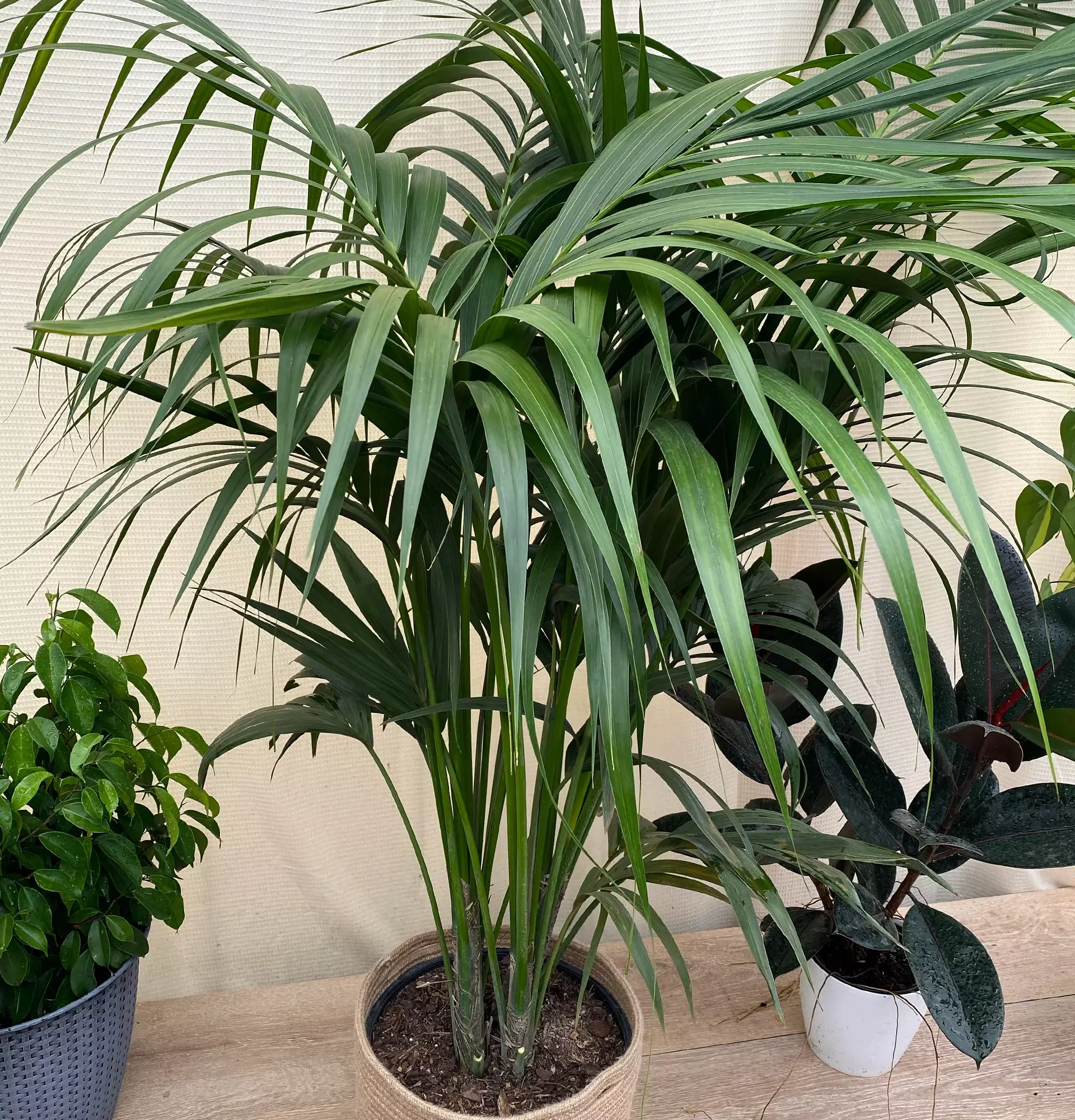
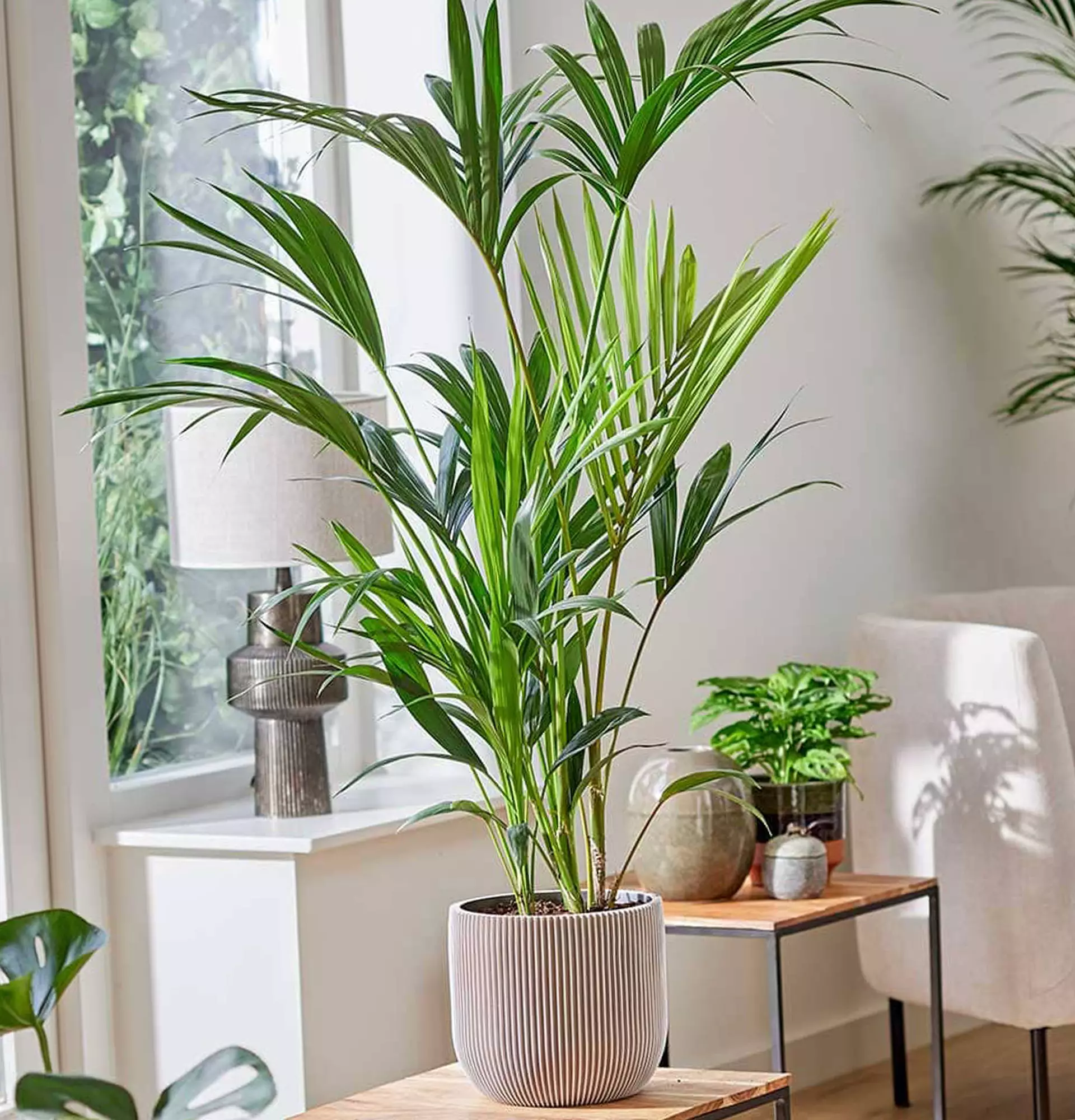
Write comments
Comments